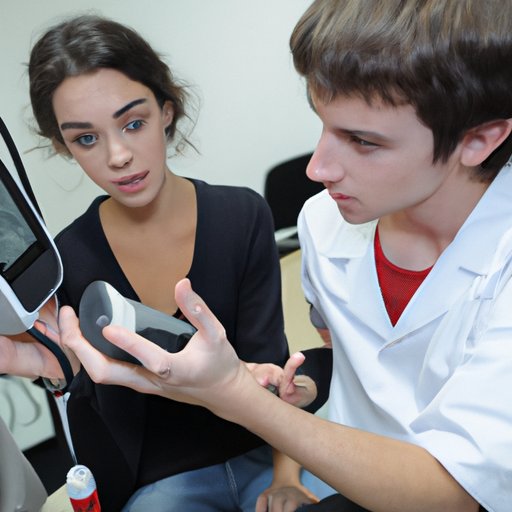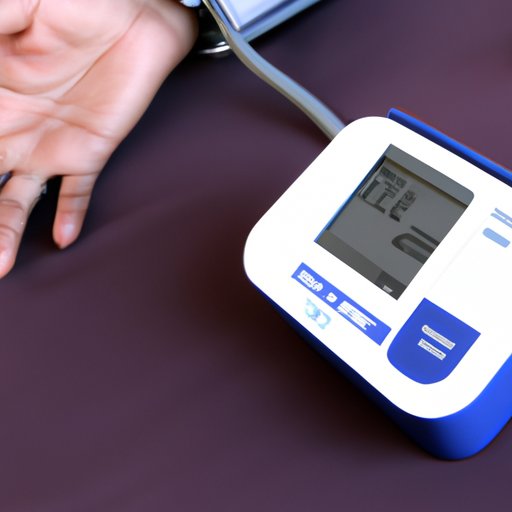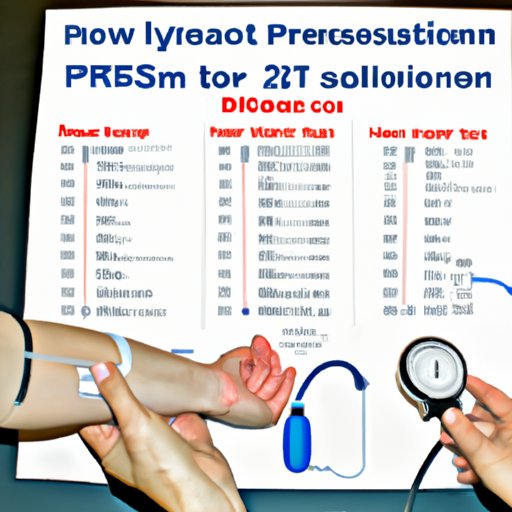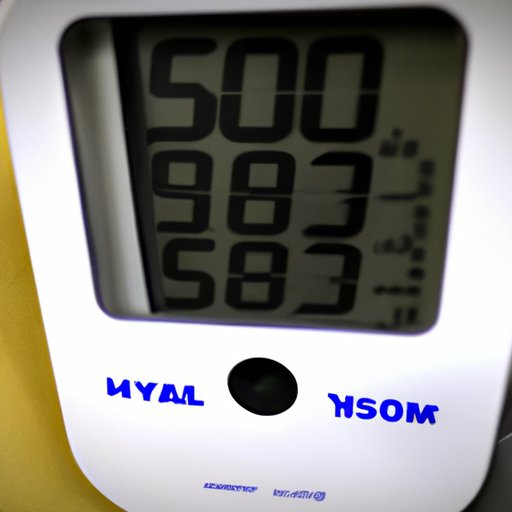Introduction
A blood pressure machine is an essential tool used in medical diagnostics. It measures the force of the blood as it is pumped through the arteries and veins in the body. This information can provide important clues about a person’s health and wellbeing.

Exploring the Mechanics of a Blood Pressure Machine
A blood pressure machine consists of several components. These include an inflatable cuff, a stethoscope, a pump, a pressure gauge and a release valve. The cuff is wrapped around the arm and inflated with air until it is tight enough to stop the flow of blood in the artery. The stethoscope is then placed over the brachial artery so that the sound of the heartbeat can be heard. The pump is used to increase the pressure inside the cuff. The pressure gauge records the pressure in the cuff, while the release valve is used to gradually reduce the pressure.
How a Blood Pressure Machine Works
When the cuff is inflated, the sound of the heartbeat will become muffled or completely silenced. This indicates that the pressure in the cuff is greater than the pressure in the artery. As the pressure in the cuff is slowly released, the sound of the heartbeat will become louder and clearer. This indicates that the pressure in the cuff is now equal to the pressure in the artery. The pressure at this point is known as the systolic pressure and is recorded on the pressure gauge.
The pressure in the cuff is then further reduced and the sound of the heartbeat will become softer again. This indicates that the pressure in the cuff is now lower than the pressure in the artery. The pressure at this point is known as the diastolic pressure and is also recorded on the pressure gauge.

Understanding the Technology of a Blood Pressure Machine
Modern blood pressure machines are equipped with sophisticated electronic components which allow them to take more accurate readings. These components include sensors, transducers and digital displays. The sensors detect changes in pressure and convert them into electrical signals. The transducers then convert these signals into digital data which can be displayed on the digital display.
The Science Behind a Blood Pressure Machine
Blood pressure is the force of blood pushing against the walls of the arteries and veins. It is determined by the amount of blood being pumped by the heart and the resistance of the arteries and veins. If the heart pumps too much blood, or if the arteries and veins become narrow or stiff, the pressure will rise. High blood pressure is a risk factor for many serious health conditions such as stroke, heart attack and kidney disease.

How to Read and Interpret Blood Pressure Measurements
Blood pressure measurements are usually expressed in millimeters of mercury (mmHg). The numbers represent the systolic and diastolic pressures. For example, a reading of 120/80 mmHg would mean that the systolic pressure is 120 mmHg and the diastolic pressure is 80 mmHg.
It is important to take accurate readings in order to get accurate results. The cuff should be wrapped snugly around the arm and the stethoscope should be placed firmly over the brachial artery. If the cuff is too loose or the stethoscope is not positioned correctly, the readings may be inaccurate.
Interpreting blood pressure readings can be tricky. Generally, a reading of less than 120/80 mmHg is considered normal. A reading of 140/90 mmHg or higher is considered high blood pressure and may require treatment.
Conclusion
A blood pressure machine is an important piece of medical equipment used to measure the force of the blood flowing through the body. It consists of several components including an inflatable cuff, a stethoscope, a pump, a pressure gauge and a release valve. Modern machines are equipped with sophisticated electronic components which allow them to take more accurate readings. Understanding the science behind blood pressure is also essential in order to interpret the readings correctly.
Taking accurate readings is also important in order to get reliable results. The cuff should be wrapped snugly around the arm and the stethoscope should be positioned correctly. Generally, a reading of less than 120/80 mmHg is considered normal, while a reading of 140/90 mmHg or higher is considered high blood pressure.
When selecting a blood pressure machine, it is important to choose one that is reliable and easy to use. It should also be equipped with the latest technology to ensure accurate readings.
(Note: Is this article not meeting your expectations? Do you have knowledge or insights to share? Unlock new opportunities and expand your reach by joining our authors team. Click Registration to join us and share your expertise with our readers.)
